Can “natural family planning” actually work as a method of birth control?
Or are people who use natural family planning basically guaranteed to be parents pretty soon?
I’ve been dedicating the Wednesdays in October to looking at birth control methods! We started with the
pros and cons of different methods, and then looked specifically
at The Pill. I also talked about how
birth control should be a shared responsibility!
But as we’ve been having this conversation, I’ve been amazed at how many women said that the Pill just didn’t work for them (it didn’t work well for me, either!). And that’s why I want to spend today talking about how you can actually track your fertility naturally.
I’m actually going to turn this post over to Joanna, a young woman who does a lot of work behind the scenes on this blog. She’s done a ton of research into this, and has used it herself both to avoid pregnancy AND to get pregnant, and so I thought she’d be the perfect one to share it with you (plus she has a Master’s in Public Health and she’s super smart). So here’s Joanna!
The more we looked into hormonal birth control methods, the more we loved barrier methods and natural family planning.
As Sheila talked about last week: lots of people find the pill (or other methods of hormonal birth control) work really well for them but lots of others don’t.
And you can’t know which category you’ll be in until it’s too late.
In contrast to hormonal birth control, which changes your body to make you unable to conceive that month, non-hormonal methods either physically keep the sperm and egg apart (barrier methods) or temporally keep them apart (Natural Family Planning) to prevent pregnancy.
Natural Family Planning (NFP) operates by taking advantage of this one simple principle:
a woman can only become pregnant a few days a month. If sex is avoided during that period (or if barrier methods are used then), pregnancy won’t occur.
Pretty simple, right?
The trick is in identifying the fertile window each month (and providing enough buffer so that random differences between cycles don’t cause a surprise baby).
NFP isn’t the rhythm or calendar method your grandmother may have used, which is based solely on dates. We’ve developed much more scientific and accurate methods of tracking fertility.
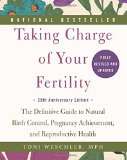 If you’re at all thinking about using NFP or are thinking about trying to conceive sometime soon, please purchase Taking Charge of your Fertility. It’s a real winner of a book and gives a great overview of all these topics in much greater depth.
If you’re at all thinking about using NFP or are thinking about trying to conceive sometime soon, please purchase Taking Charge of your Fertility. It’s a real winner of a book and gives a great overview of all these topics in much greater depth.
Natural family planning really isn’t terribly difficult. It requires three things:
- understanding your body
- understanding the method you’re going to be using
- and having the self-discipline to carry it out
If used correctly, the unintended pregnancy rate with natural family planning is about 1% in a year–basically the same as other methods of birth control.
The downside is that if it isn’t used correctly, the unintended pregnancy rate can be as high as 25% in a year.
But, honestly, it only takes a few minutes a day to deal with. You’ll need to take your temperature in the morning before getting out of bed, keep an eye on your toilet paper (to track cervical mucous), and use a journal or an app to keep track. If you’re using the Marquette method, you’ll also need to take a urine estrogen sample (more on that later). Personally, I’ve never done the temperature taking or the urine estrogen test, but I found the mucus testing really easy and manageable.
Maybe all that sounds like WAY too much work, and it might be. But seriously, it’s less intense than you’d think (and it’s the most overwhelming at the start). We’re going to cover some of the basics in this post, but to do NFP well, take a course! Give a look for one in your area or check one out online.
An additional note: while I have many ties to the Catholic church (my Dad was raised Catholic, my siblings attended Catholic school, etc.) I’m not Catholic. I agree with a lot of what the Catholic church has to say about fertility, but I am going to cover – and even recommend – using barrier methods or pulling out in this post, which I know contradicts the Catholic church’s teaching on this area. However, in my research into NFP (both for this post, during my engagement years ago, and during my infertility journey more recently) most of the information I found about NFP was from a Catholic perspective. I hope this post helps bring an Evangelical perspective to the topic, while being grateful for the wonderful NFP resources and methods developed by the Catholic church.
To do NFP well, you need to understand your cycle
The menstrual cycle is about 28 days on average, though many women have longer or shorter cycles, and has 4 distinct phases. First, the uterine lining is shed (“menstrual bleeding” aka “period” approximately 3-6 days), then a follicle develops (the follicular phase; approximately days 7-13), an egg is released (ovulation; approximately day 14), and then the uterus prepares either for the long haul of pregnancy or menstruation (the luteal phase, approximately days 15-28). Then the whole thing starts again.
Sperm Are Alive!
The vagina is a rather hostile environment (it’s about as acidic as apple cider vinegar!) but once sperm are inside the uterus, they can live, happily swimming away, for up to a week. So if you had sex on day 5 of your cycle and then you ovulated on day 11, you could get pregnant! And you are actually more likely to get pregnant if you have sex the day
before you ovulate than if you have sex on the day you ovulate. The egg, by contrast, only has 12-24 hours of viability before it disintegrates after ovulation. That’s why sex BEFORE ovulation is so important if you’re trying to get pregnant: you want a host of sperm ready and waiting for the egg when it’s released, not swimming upstream in hopes of making it on time.
While the vagina is a rather hostile spot, if your husband pulls out but gets any ejaculate on your vulva, those little determined swimmers can still sometimes manage to literally become one with an egg. Additionally, pre-ejaculate can also contain sperm, especially if he’s had a recent orgasm.
So how are you to manage dealing with all of the phases of your cycle AND sort out the sperm lifespan issue AND manage to keep your sanity intact…
How do I actually DO Natural Family Planning?
“Natural family planning” is not “the rhythm method.” Each method uses the same general guiding principle:
accurately identify the fertile window and avoid unprotected sex during it. The variation comes in which markers of fertility each method uses.
Basal Body Temperature – your body’s temperature is 98.6 degrees Fahrenheit, right? Nope! That’s just the average. Different people have slightly different baselines (I run cold, for example) and your temperature actually changes throughout the month, with a pronounced spike after ovulation. Basal body temperature tracking involves taking your temperature each morning when you wake up, at the same time each morning, before you get out of bed. I’ve only dabbled in this method, but I’ve heard it’s a great way for husbands to be involved, as they can be the keeper of the thermometer.
If you’re going to use BBT, buy a thermometer that will store its last readings, so that you don’t have to write down your temperature the second you take it. Not having the right thermometer was a big reason why I didn’t stick with the BBT method, if I’m being honest.
Cervical Mucus – Remember how we talked about how hostile an environment the vagina is? Well, around the fertile window it makes sperm’s lives better (and longer) by providing a nice medium for them to swim to. We call it mucus (I wish there was a better word…) You may have noticed globs on your toilet paper after you urinate. If you pay attention, the mucus becomes more stretchy and abundant as you move toward ovulation. It will achieve a consistency kind of like an egg white at ovulation, then suddenly dry up. I used this method to keep tabs on my fertility and I found it really intuitive. You’re wiping anyway, so all it takes to do is a smidge of brain power and a little record keeping.
Estrogen Tracking – We talk about being hormonal at certain points during our cycle, and that’s kind of a misnomer. We are hormonal ALWAYS and there are spikes and troughs throughout the menstrual cycle of the various sex hormones (the charts are enough to make my eyes cross). At home pregnancy tests take advantage of the fact that we secrete hormones into our urine and test it to see if it contains HCG, which is secreted in large amounts throughout pregnancy. Home tests can also be used to track estrogen as a marker of fertility. I haven’t used them as they were out of my price range when I was first married, but there something I’ll consider as part of my family planning arsenal down the road, now that my husband and I are done with school.
Choose a Natural Family Planning Method
The Creighton Method uses tracked cervical mucus to identify fertile days. I’m a little wary of suggesting it as a means of avoiding pregnancy because you’re going to be better off
also tracking basal body temperature (as in the sympto-thermal method), but because Creighton doesn’t require waking up at the same time every day or taking a daily temperature before grabbing your caffeinated beverage of choice, or the expense of urine tests, it may be the right choice for you if you’re willing to live with a decrease in effectiveness.
The Sympto-Thermal Method uses both cervical mucus tracking and basal body temperature to identify the fertile window. NFP methods that use two or more methods to identify the fertile window tend to work better.
The Marquette Method adds an additional indicator: urine samples of estrogen. This is more expensive than other methods, but the additional layer does help with accuracy. You also don’t have to use basal body temperature to use the Marquette method.
Each method has rules about which days barrier methods or abstinence need to be used to prevent pregnancy, and that’s beyond the scope of this post. If you’re interested in a method, find a book and a class and get learning!
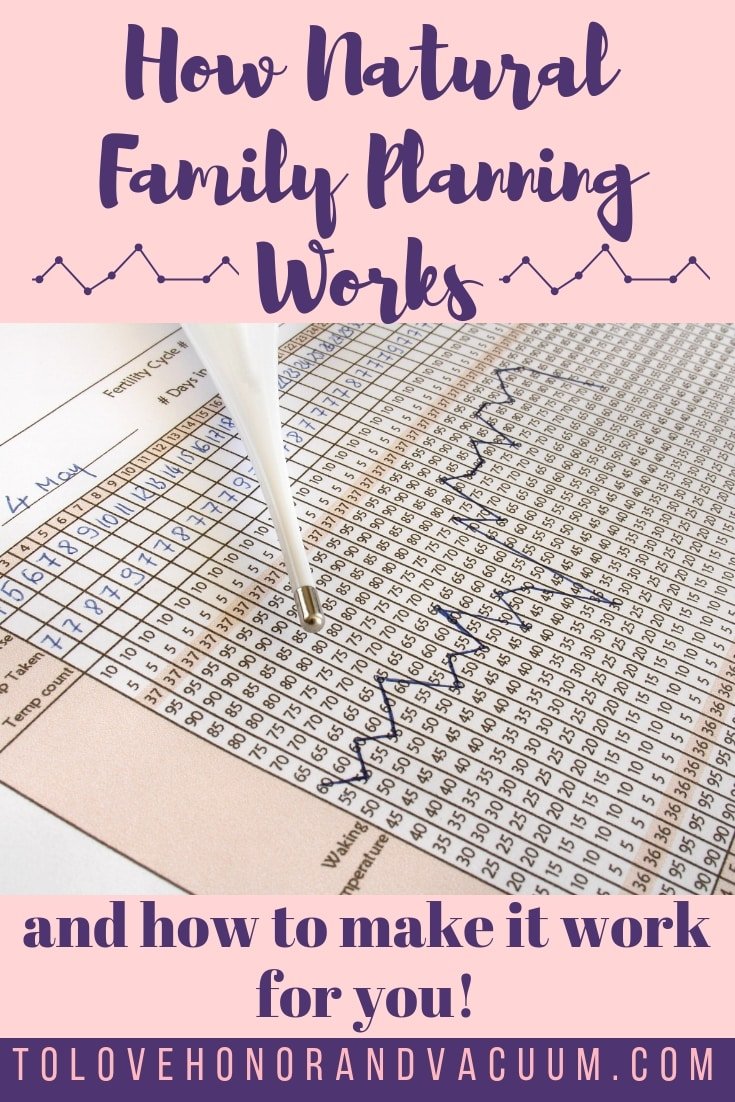
A Note About Abstaining During the Fertile Period
One thing that I genuinely dislike about NFP is that it isn’t fair to women.
Our libido tends to ebb and flow with our fertility, and… well… this can lead to a lot of abstaining just when sex seems most interesting. That’s why I’d recommend having an additional barrier birth control method (like a condom or a diaphragm) to use during the fertile period if you’re going to use NFP.
Use a fertility tracking app for record keeping, but don’t let it tell you what to do
One thing we found in the comments to the posts on birth control this month was that there are lots of women who chose to use a fertility tracking app who ended up with an unexpected pregnancy.
Here’s the problem: the app can only predict your fertile window accurately based on the data you give it. If you are letting the app do your guesswork, it will only be a guess. You need to feed it really accurate data.
If you understand your cycle and how NFP works, you won’t need the app to tell you if you’re fertile or not – that will be obvious to you.
Use the app as a record keeper only.
Side Benefit to NFP: EMPOWERMENT!
Tracking your cycle is also a really great way to catch hormonal or other gynecological problems early. In the spring of 2015, I noticed that my cycle had suddenly gone haywire. It was a rather unpleasant experience and, after a few months of remembering what day things started and ended and getting rather concerned each month when my period failed to show up when I expected it, I got myself a period tracking app. It was so convenient because I always had my phone handy and could quickly mark down if I saw mucus or bleeding. Armed with data, I went to the doctor, which eventually led to a diagnosis of PCOS. Because I had a condition that causes infertility, even though we were in our mid twenties, my husband and I only had to try to get pregnant for 6 months before we were eligible for infertility treatment. It still took us 18 months to conceive our daughter, but we are so grateful we had the 6 month head start!
Periods are great health indicators. If things aren’t normal one month, no sweat, but consistently weird cycles can be a sign of PCOS, anorexia, hormonal problems, or another health problem and are a great reason to go visit your primary care doctor. If you’re paying attention to your cycle, you will be able to identify problems quickly and you’ll have data to show your doctor.
Honestly, I’d really recommend taking the 15 seconds a day to track your period and cervical mucus, regardless of whether you are using NFP or not. Having had a health problem I identified by tracking my cycle while not trying to conceive, I am SO grateful for the empowerment I got from understanding what my body was doing and from having tracked what was happening when so that I could get help.
What do you think? Have you ever tried to track your fertility? Let me know in the comments! If you’re at all thinking about using NFP or are thinking about trying to conceive sometime soon, please purchase Taking Charge of your Fertility. It’s a real winner of a book and gives a great overview of all these topics in much greater depth.
Natural family planning really isn’t terribly difficult. It requires three things:
If you’re at all thinking about using NFP or are thinking about trying to conceive sometime soon, please purchase Taking Charge of your Fertility. It’s a real winner of a book and gives a great overview of all these topics in much greater depth.
Natural family planning really isn’t terribly difficult. It requires three things:



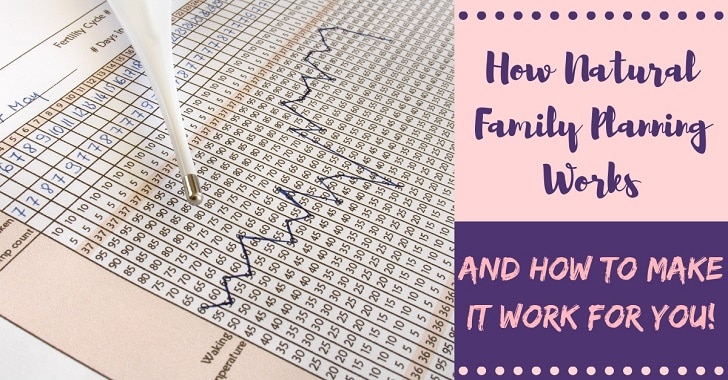





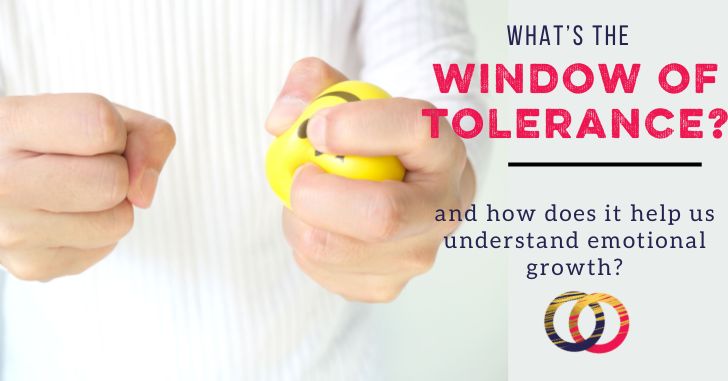

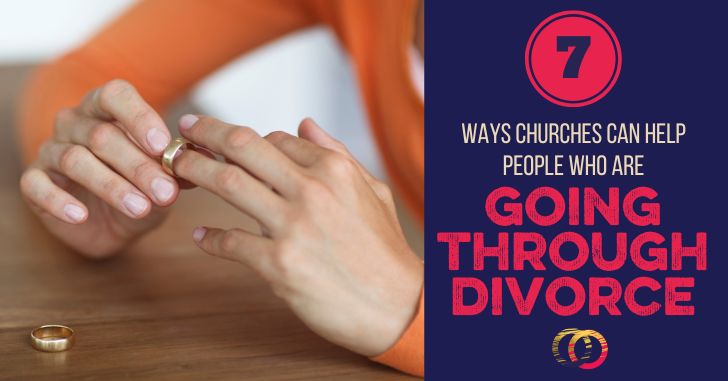


I’ve heard about Natural Family Planning for a long time, and it always sounded a complicated. And the women who used it said they got pregnant A LOT.
I used the pill for parts of the five years we have been married, that I wasn’t pregnant with my two children. I had horrible reactions to it, and am seriously rethinking birth control once this baby is born.
My sister in law is severely allergic to medications as well as latex, so she did a ton of research and discovered the German device called Lady Comp. It tracks your temperatures and tells you when you can have sex safely. It is the most accurate version of NFP, and takes all the guesswork out of it for you. It is so accurate, that it was even able to tell my sister in law that she had an autoammune disorder that she was not aware she had!
I am getting more like her with all my various health issues and allergies, so I am really considering getting one of these.
Anyone else heard of it?
Yes, I have a lot of people swearing by Lady Comp! Again, though, you need to make sure that you feed it accurate data. And I would combine that with cervical mucous tracking, and then you’d probably be good!
I use lady comp and like it. Many of my friends use it too. You have to be very diligent about entering data like Sheila stated. After I had my son, he had a lot of trouble sleeping so it was hard to get enough sleep each night to check my temperature, however, LadyComp is something I would suggest to anyone. Tracking myself made me a little nervous so having LadyComp as an aid has been helpful. It also eers on the side of caution until it really learns your cycle. Congrats on your baby! I hope LadyComp goes well for you if you decide to use it. 🙂
My Bradley Childbirth educator introduced me to NFP. Her joke was: “What do you call someone who practices NFP? – A Parent!” I used NFP after a miscarriage to get pregnant, then after my first baby to avoid pregnancy. I had two surprise babies and two planned babies with this method. Now we stick to barrier.
I discovered this website this month and the birth control topic has been very thought provoking. I’ve been on The Pill since I got married 2.5 years ago. I never had any side affects or weird physical changes other than gaining a couple pounds which I had anticipated might happen. I am now beginning to think it may be really messing with my libido without me having known. My question is, how does one switch to NFP from The Pill? Are my hormones so “artificial” that the data will be messed up?
Hey, Rhonda!
TBH, I think it would be safe to assume that your hormones would potentially be out of whack for a bit of time after getting off the pill 🙂 But the good news is that doctors say it really does get back to normal after a few months. Obviously I’m not a doctor, but I think it would be wisest to use barrier methods while you tracked for 3-4 months at least. If you’d like to try natural family planning there are also tons of great books and courses out there that have a lot of information from people who have dedicated a lot of time to researching this topic exactly 🙂
Haha! Yeah I’ve heard that joke, too 🙂
TBH, I think that a lot of people who use NFP haven’t researched the whole picture. It works best when you take a course from a licensed practitioner in the natural family planning method of your choice. However, most people do get their information about how to use NFP from medical professionals who don’t give the whole picture. I don’t know what happened in your case, obviously! And congrats on your little ones! But in general, I think a lot of people have only half of the picture when it comes to NFP. Case in point: how many people commented on our last post about this saying they were just using an app to track their periods and thought that was enough!
I think that barriers are really important to use during your fertile periods for sure–and likely a few days on either side! Did you find that you couldn’t accurately tell if you had ovulated? Just curious!
The first “surprise” was after only one month of tracking. So I hadn’t given it enough time. The second “surprise” I think was a case of not having a long enough window of using the barrier before. I think with this method you just have to be ok with surprises, and we were then.
Also keep in mind the failure rate of barrier methods! Hard to tell if charting was the culprit when you know you had sexual during your fertile period.
Creighton is actually super scientific and has an excellent prevention rate, but you need training. Please don’t advise people not to use it because you’re not trained! Research shows people are more likely to get pregnant when they track multiple indicators instead of doing one with instruction.
Hey Amanda – do you want to shoot me a quick email at joanna@tolovehonorandvacuum.com? I’d love to hear more about the Creighton method and am more than happy to update this post, but I’d like to chat more about it with you before I make changes. Would that be alright? Thanks!
What is the best way to get educated on the Creighton method? I didn’t see anyway to take a class where I live in Missouri.
Hi Krista! The rules for the methods I’ve looked into are super strict for the follicular phase of your cycle – but you’re right, one really off month and you can have a surprise… hence the unintended pregnancy rate. If a person wanted a higher efficacy rate, you could use barrier methods or abstinence through the follicular phase and then past ovulation (according to whatever method) to prevent a pregnancy.
I have a slightly different version of that joke: At least with NFP, you definitely know when you mess up! (I knew when we blew it, but really, how many people get pregnant from just once? I still don’t know the answer, but I do have a lovely daughter!)
I’ve been using NFP since my twenties when I was introduced to Take Charge of Your Fertility. It was so eye opening! I learned so much about my body especially after a horrible experience with being on the pill for 10 years.
I have used it to successfully get pregnant and avoid pregnancy.
I started with just tracking BBT, then added cervical mucus.
After a recent miscarriage I wasn’t sure what was going on with my body so I added OPKs to the mix. They can be expensive but I found a box of 30 OPKs and 20 pregnancy tests on Amazon for $12.
We conceived the first month using all three.
Thanks for the great overview of NFP! I’ve been curious about it for a long time but too lazy to learn. Do you know of any good cheap apps used to help you track?
Hoping someone else chimes in here to help you! 🙂
I used the Kindara app and really liked it for record keeping 🙂
Joanna I am reading the website for Kindara right now at your suggestion. I always assumed basal body temperature was taken … ahem … vaginally … I am so much more on board now! Thanks for the suggestion. I’ll read into it more!
Okay, Lynn, I had to laugh, because I always assumed cervical mucous was checked by, well, checking THERE, not just on what comes out. 🙂 I only figured that out recently. So you’re not the only one. 🙂
Kindara! That’s the one you kept talking about that I couldn’t remember. 🙂
I check cervical fluid internally— too easy to miss it just wiping!
I’ve used Fertility Friend for a number of years and I’m pretty happy with it. I use the free version. It’s not the prettiest app, but allows you to track many of your fertility symptoms in one place including BBT, cervical fluid, menses, intercourse, and a bunch of other secondary data if you like. I used BBT and mucus tracking to get a good handle on my fertility window but switched to just tracking cervical mucus once I was familiar with my cycle. We’ve had no trouble avoiding pregnancy using Fertility Friend, but the bonus of NFP in my opinion, is that NFP also helped me time my pregnancies pretty perfectly. I’m in school so it’s helpful if babies are born at the beginning of the semester to make more efficient use of leaves. So far we’re 4/4 for beginning of the semester babies.
Love this! “We’ve had no trouble avoiding pregnancy using Fertility Friend, but the bonus of NFP in my opinion, is that NFP also helped me time my pregnancies pretty perfectly.” That’s one of the big benefits! And wow, congratulations on timing it that well!
Another vote for fertility friend. Been using it for almost 20 years. Never had a reason to upgrade past the free version
Sheila – I only recently figured out that cervical mucous is monitored externally, too!
re: Kindara – I really like the look of the app but I’m seeing a lot of negative reviews for Android, which is what I use. I’ll have to check around a little longer at the other options like Fertility Friend!
LaToya – I’m revealing my youthful ignorance here, but were there apps 20 years ago? There certainly weren’t smartphones!
I have had success with the Kindara app. It is free, but I bought the thermometer that Kindara created to be used with the app. It’s blue tooth so I just have to stick the thermometer in my mouth when my alarm goes off and it sends my temp to the app! You can also track cervical fluid, cervix height, openness and firmness, vaginal sensation, what type of sex you had and the other customizable options.
I would like to add that another huge part of tracking your fertility like this is taking care of your hormones through diet and lifestyle (see the book Joanna recommended). You want everything to be as consistent as possible. 😉
I use a free app called OvuView, and it’s worked really well in keeping track of cycles and body temp and other things.
I’ve tried a couple of different apps, but Lily has been great. I like that I can see my data going back many months on a screen. Seeing it graphed for me has helped me learn what’s normal for my body. It also takes the math out of computing the data I put in and explains which rules it uses to arrive at whether or not you’re in a fertile window.
I use the method outlined in Taking Charge of Your Fertility, and there is an app that goes along with the book! It’s laid out the same as the paper charts are that I used for years but it sure makes it easier to enter all the details everyday and also while traveling. It doesn’t tell you what your fertile days are (it’s just serves as a record keeper) so you still need to know and understand the method to use it.
I used NFP for a little over a year successfully. I didn’t read the book you are suggesting or take any classes; I just used the info I got from blogs and YouTube. I would never be a good temperature taker, because I don’t get up at the same time each day. Weekends are for sleeping in a bit! 😜 I tracked my period and mucus with the iperiod app. I DID pretty much believe the app’s suggestions about my fertile days, but I was very regular, and those days also lined up with what I was seeing with my mucus.
One thing though. I don’t know how fertile I actually am, because I’ve never had any pregnancies. It could be that this worked so well for me (in spite of me not doing it as thoroughly as some other women) because I just wouldn’t get pregnant anyway? I don’t know.
That is hard to know! I think if you’re super regular, though, that’s likely a good sign. 🙂
That’s what I’ve always assumed!
I track my cervical mucus, use the Kindara app, and then use the FemCap (from Germany) with organic spermicide when I want to be intimate on my fertile days. So far, so good.
I know it would be safer to measure my temperature, but I couldn’t while breastfeeding at nights and then my kids always steal my thermometer if it is near the bed.
But I won’t go back to hormonal pills, as I was quite depressed and moody. I didn’t know at first that I had to take it every single day at the same exact time (so sometimes let a day and half pass). So I had my second child while on the progesterone pill. I find I have much more energy and sanity at least half the month with NFP than when on a pill.
It is very important to use the symptobasal method and not just rely on an app. Really get to know the different types of cervical mucus and what they mean. If you can take your temp, that is best, as that tells when ovulation happens more accurately then mucus, especially if yo are sexually intimate. I had my third child when just relying on the prediction of my average cycle. I had a super short cycle and then a really long cycle. I got pregnant on the really long cycle, since I thought I was past ovulation, but I wasn’t. If I had known how to read the cervical mucus, I would have known to wait a bit longer. But now I use the FemCap with organic spermicide so that I can be intimate on fertile days when I actually have some libido.
That’s great, Kaisa!
Since I’m most in the mood and enjoy sex most when I’m ovulating (it’s the only time usually in the month that I physically have the desire to initiate sex instead of knowing I should occasionally), we use condoms and/or pull-out when I’m ovulating. But we only use pull-out if we haven’t had sex and he hasn’t masturbated in the past week. Other than ovulation week, we use NFP/mucous test. I have/had mild PCOS and that’s always worked for us. The two times we got pregnant were 1) after 11 months of TTC using my 3 fertility apps and trying to have sex every other day during the recommended window, and 2) on the first try when I let him cum inside me because I couldn’t remember when I ovulated and didn’t want to check atm because I was too into the moment lol.
Also, based on when I’ve gotten pregnant, even despite my mucous and temperature, I think I ovulate a day or two later than all my apps predict (& they have years of data and symptoms logged in them). Maybe that’s due to the PCOS, maybe it’s something else. I’m currently pregnant, and plan on using either Lady Comp or Natural Cycles after this baby.
I think one of the interesting things about tracking is that women do realize they have that libido burst around ovulation! And that’s what The Pill gets rid of, too. It is cool that we can understand that about our bodies.
I’ve used the NFP method over the past several years to get pregnant three times. I think it’s a great method when trying to conceive, but I would be careful when using it as the only method when trying to prevent pregnancy. I think that it would be best to use in combination with a barrier method like the author suggested. I would also really suggest not relying on only NFP for birth control until you’ve had time to track your cycles for a while and make sure you understand how your body works. Like others have said, the book Taking Charge of Your Fertility is a great overview of the whole method and TCOYF also has a free app that I really like.
I guess I should add that I used Basel body temp and cervical mucus to track ovulation, between the two I’ve always been able to tell when I’ve ovulated, after the fact. But I think both methods are pretty necessary (at least for me) to get a good idea of when I’m fertile or not. Also, they say you need to be very consistent about the timing of when to take your temp. I didn’t really need to be for me, I think all women are different. I could wake up at different times each morning and as long as I took my temp right after I woke up, it was pretty accurate.
I totally agree, LA. For the last post in the series I want to talk about how to think about birth control BEFORE you’re married, and I’m going to talk about starting to track for many months before (if possible) so that you really do know your body. I know many young women who get married and do the counting thing, and then end up with a honeymoon baby. You really do need to keep track for quite a long time to get the data!
I’m not married yet (not even dating), and I’m following these posts and comments with interest. It’s so great to know my options way ahead of time.
And it’s straight-up cool learning about fertility and how our cycle works.
I know! We really shouldn’t treat it like there’s such a mystery about it!
I’m really looking forward to that post, Sheila! I’m getting married in June and have been through Creighton counseling and the Taking Charge of Your Fertility book. Now it’s just a matter of sharing this info with my fiancee and praying and seeking the Lord and other counsel on it.
I do have a question for you– when do you recommend going through your books/materials on sex (as in, how soon before the wedding)? (I have a *very* high sex drive and both of us our virgins.)
Allison, congratulations on your engagement! I’d say that it’s a good idea to think about birth control and understanding your body as soon as possible, because it’s good to have a lot of data to chart. As for The Good Girl’s Guide to Great Sex, I think reading it in the last two months would be fine. 🙂 You likely don’t want it too soon! 🙂
I also didnt know exactly what part of the body you are supposed to test with the basal thermometer before I bought one! haha
When I did buy it, I purposely put the package face down on the counter because I hate buying personal items! Well, the cashier turned it over while she was waiting on her current customer’s transaction to complete and began asking me questions for the people near us to hear. “Are you buying this because you have a fever or just in case to have on hand?”
I about died of embarrassment because I’m so shy about this stuff. I’m sure the person behind me could easily see the label.
Cashiers shouldn’t be so nosy about that… how rude! I was a late night cashier at a pharmacy in high school and I saw some very odd baskets of items cross over my scanner. You can bet at 16 I was often as embarrassed as they were, though and I tried to stay as cheery and poker faced as possible. Sorry that happened to you!
Thank you for including NFP in your discussion! My husband and I have used NFP since we were married—12 years last month! We first began with sympto thermal, now we use Marquette, and I was once an instructor for sympto thermal. We’ve successfully conceived within a month or two when trying to achieve pregnancy, while avoiding pregnancy for the other 8 or so years I wasn’t pregnant or exclusively nursing.
I have found NFP to be very empowering, both in knowing my body (for ex, I am a weight lifter, and my strength ebbs and flows with my hormones—it’s great to know when to push for a PR and to know why some weeks the weight seems so much heavier) and in my relationship with my husband. We have to decide each month whether we want to conceive, which keeps the conversation open and two sided.
In terms of the Creighton method, I do not personally use it but I go to a NaPro technology trained OB GYN (so the tracking method they use is Creighton) and I would highly recommend every woman finding such a physician. He investigates the root causes of many problems women have with their cycle, rather than using hormonal birth control as a bandaid to cover the troublesome symptoms. For ex, my mood and PMS type symptoms around ovulation and before my period are actually caused by lower than normal estrogen (We did blood draws on specific days pre and post peak, and found I have higher progesterone and lower estrogen, whereas most women my age have the opposite problem!). A friend with low progesterone was able to get bio identical progesterone and pinpoint when to use it for relief from her symptoms, as well as to alleviate her post partum depression. Her non NaPro OB gave her progesterone cream to use daily—which not only exposed her to unnecessary hormones, but could have acted as a contraceptive during a time she was open to conceiving.
NaPro docs are trained to work with your body to identify and treat hormonal imbalances, hyper/hypo thyroid, and treat the cause of infertility (when possible). Their success rate with infertility is equal to or better than assisted reproductive techniques.
All that to say, I encourage your readers to look into NFP and NaPro technology!
Oh, thank you for that comment! That’s very helpful.
I love my NaPro doctor!
I am going to start using the symptothermal method after I have our second baby (just starting my second trimester). For those of you who check cervical mucus, do you check by inserting a finger or just at the opening of the vagina? And do you have any trouble distinguishing between cervical mucus and vaginal lubrication? I tend to be very well lubricated haha
See my above comments with Sheila… we had the same thoughts not that long ago! You’re checking what’s there when you wipe/what’s in your underwear. No internal examinations necessary 😉
Thanks Lynn, how do you distinguish vaginal lubrication from mucus?
Taking Charge of Your Fertility has pictures within the book. I’d really start with that. Fertile mucus tends to look and act like raw egg whites (clear, stretchy up to 2 inches). Once you start noticing, it will be hard to not notice. All this you will find on your toilet paper after you wipe.
I just recently realised that I didn’tneed to put my finger in my vagina to check for cervical mucus! If you do so it can be very confusing to know. u
Underwear and toilet paper really is enough.
for the method I use I write down what I see and feel on my chart and label it either d (for dry – I’ve never had that), v for moist but no mucus visible, s for some mucus, and s+ for really see through, wet stringy mucus. That has always helped me distinguish it and understand (while checking with my temp) if I was fertileor no longer.
I’m sure others have mentioned this, but pulling out is not a method of avoiding pregnancy.
If you have irregular periods NFP likely won’t work for you. The timing of my periods really varied.
Tracking body temperature…be aware that there are factors that can affect this as well, like infection, ibuprofen, tylenol and aspirin.
I was raised Catholic. In my observation NFP was more of a tool for people wanting to get pregnant. It didn’t seem to work so well as a reliable method of birth control.
I’m sorry, but I must disagree with you on this statement: “If you have irregular periods NFP likely won’t work for you. The timing of my periods really varied.”
My cycles have varied from 32-45 days long due to my PCOS. However, if you know your fertile cervical mucus well, you will be able to successfully determine ovulation. This may take time and training with a professionally-trained instructor (especially with Creighton method) but in can be done. In fact, that is why NFP is so useful to achieve pregnancy if you have irregular cycles. But, it can be successfully done to avoid pregnancy.
Maybe the hardest aspect of NFP that people don’t take into account is that if you’re confused about your mucus or what you’re tracking, you need to avoid sex that day. That does take extra grace and self-control when you and your husband really desire each other.
The knowledge that comes from NFP is so empowering. As I mentioned, I have PCOS, and no matter what dietary/exercise/medicine changes I make, I tend to ovulate around days 20-25, no the “usual” 14. This radically changed the due dates of my children – and I had to tell doctors that! Otherwise, they might have said my baby was “overdue”and pressure me to induce, when he/she really was not 40 weeks.
There is also a talk of a honeymoon effect with NFP. When we had to avoid, we anticipated sex, to the point of saying, “Don’t accept any invites for this weekend! We’re not going anywhere!” once we were out of the fertile period.
Thanks for clearing that up! I never understand why people say, “If you have irregular cycles, this won’t work.” The whole point of this method is to understand where you are in your cycle on any given day.
This can be ambiguous sometimes, which is why this piece recommends barrier methods (or other forms of intimacy) as an option. (Or some people are committed to waiting, like yourself, and may experience benefits like you describe. ☺️)
But to say it doesn’t work is just misinformed.
(I too have “delayed” ovulation— never on day 14! I’m always glad that I have a conception date instead of the standard due date, because I run late as it is!)
Run overdue in pregnancy, I mean. ☺️
Couple of notes here:
Technically, NFP (“Natural Family Planning”) signifies tracking your cycle/fertility and avoiding intercourse during fertile times, the method used by many practicing Catholics. FAM (“fertility awareness method”) is the same tracking approach— with the option of a barrier method during fertile times.
In the book “Taking Charge of Your Fertility,” the author chooses to say “cervical fluid” instead of “cervical mucous.” She points out that no one would ever call a man’s emissions “mucous” and we have to be intentional if we want to change the demeaning language around so much of women’s health.
Just my 2 cents as a suggestion. ☺️
Love that there’s a post on NFP! I feel it has a bit of a bad reputation which is unfair.
We got into NFP (in combination with barrier methods) because we didn’t want to use hormonal birth control.
We took a course (as an engaged couple, waiting to have sex until married) and I love that we did that. It was really good to have conversations about sex and fertility prior to marriage as a couple. Without that course I think we would haved missed a lot of good conversations that helped prepare us for sex (and prepared my husband for my monthly cycle!). It was also good for me to get to know my body better before marriage.
It’s also very empowering to understand my body and know where I am in my cycle. I don’t feel like a victim of my body as much anymore.
We did conceive 2 months into marriage due to a ‘condom incident’ a few days before I ovulated. Oops! It’s important to realise that barrier methods have a higher failure rate than ‘pure’ NFP. But it was also special because I knew I was pregnant (my temperature didn’t drop) before a test could read positive.
For anyone considering NFP, knowledge is power! I strongly suggest learning from someone who is cerftified. In the beginning I had so many questions! Some methods are a lot better than others also.
Thanks so much for posting a postivie NFP article.
My husband and I use FAM currently and love it. We’re not currently trying to conceive, but I love that what I learn now as I track my cycles will help us when we are! Charting my cycle was a little difficult at first (I tried a couple of different apps to track my data before I settled on one and learning a morning routine that includes another person was a definite challenge), but I’ve gradually learned what normal is for my body in different parts of my cycle. I also have a better understanding of my hormonal fluctuations so I’m better able to manage my mood swings- or warn my husband so he can remind me to chill. 😊
I also read Taking Charge of Your Fertility and it was so helpful!
What do you do if your mucous is inconsistently different to what opk’s show? I can’t temp either due to small kids/ insomnia. I’m very aware of my cycles, but cannot accurately predict when ovulation will occur, which would mean an awful lot of barrier use. I’ve used my knowledge of my cycles to fall pregnant 3 times (currently pregnant with number 2) but I guess with my cycles I’m not confident in using that knowledge to avoid pregnancy. I fall pregnant really easily (5 months – after pill (never again), 2 months ending in mc then fell pregnant the very next month without trying with this baby) and I’d be concerned a dodgy cycle would get me pregnant too soon again. And what about breastfeeding? Are there signs your fertility is returning? Last time I missed it, even though I was looking out for it. Luckily I didn’t get pregnant on my first postpartum cycle 13 months after bub was born!
Does anyone have experience using NFP during the postpartum period when you really have no idea when you will next have a cycle? I would honestly love to move away from hormonal birth control, but with three-month-old nursing twins I need to feel confident that we won’t confront a surprise pregnancy (and we haven’t decided whether we want more at all). Would love to hear advice, thanks!
You should be able to find more specific info on the Web about this. I tracked my cervical fluid after my 3 pregnancies. If I remember correctly once you start getting fertile cervical fluid (usually when my babies got to about 6 months old) you need to wait until you have had 4 dry days before it’s safe again. This can happen off and on for a couple of months before your first period starts
First off, Joanna, your baby is beautiful. Gorgeous.
I’m lucky, I’ve never really had a problem telling exactly where I am in my cycle… not needed to “record” it, simply because of my physical and emotional tells. Been basically using NFP since my pregnancy (which happened because our barrier method [at my husband’s insistence] was, uh, defective!) So far so good. xD